MusicRadar Verdict
Another successful chapter in Taylor's story innovation, the GT's mid-length scale makes perfect sense in practice. But unlike the smaller GS Mini before it, the solid wood American build means a higher entry price for players
Pros
- +
Medium scale provides a superb balance between playability and portability
- +
C-Class bracing offers singing sustain across the 'board
Cons
- -
Like the GS Mini, this feels like a guitar many would enjoy but the price here will place it out of reach for many
- -
A cosmetic gripe but for us the orangey hue of the mahogany neck don't quite fit the GT's overall aesthetic
MusicRadar's got your back
What is it?
With acoustic guitar design it’s all been done by now, right? As Martin proved recently with its SC-13E, innovation is still very much alive and kicking in this world marked by tradition. Its fellow American acoustic giant rarely stands still when it comes to innovation. Fuelled by the ingenious mind of Master Luthier and partner Andy Powers, Taylor has developed a new bracing design and arguably the arguably the benchmark of smaller scale travel guitars with the GS Mini.
It’s also been a leading force in using sustainable woods, first with ebony and now with urban ash. Several years ago Powers had another bright idea, and now it’s ready for its curtain call; a medium-scale acoustic, the Taylor Grand Theater.
Why has nobody thought of this before? Why was the space between a full-scale and travel guitar overlooked until now? Perhaps the tonal compromises may have dissuaded others, but the GS Mini changed our perception of how big a little guitar could sound. And the scale here is just one of a few headline features we need to talk about…




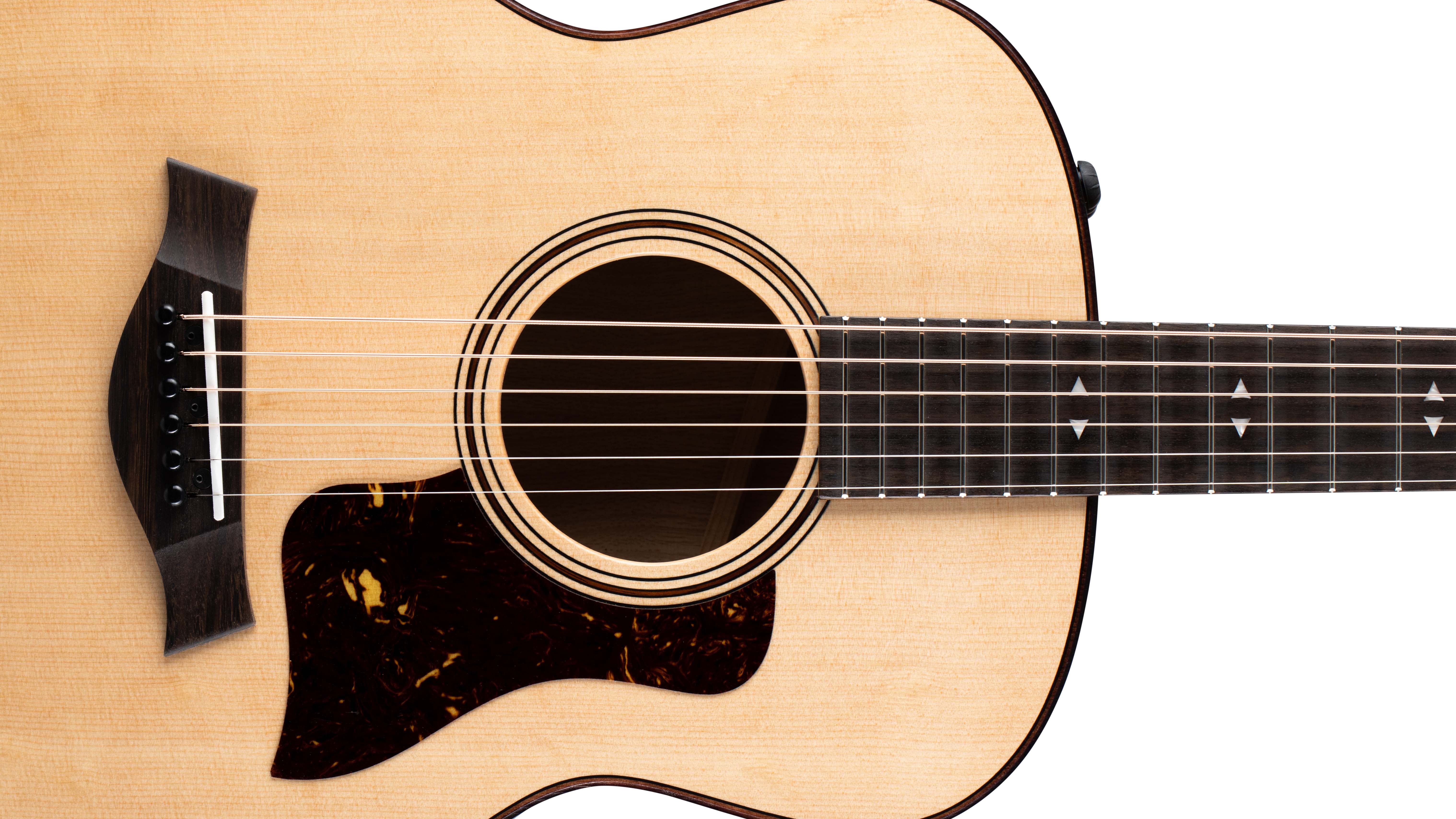

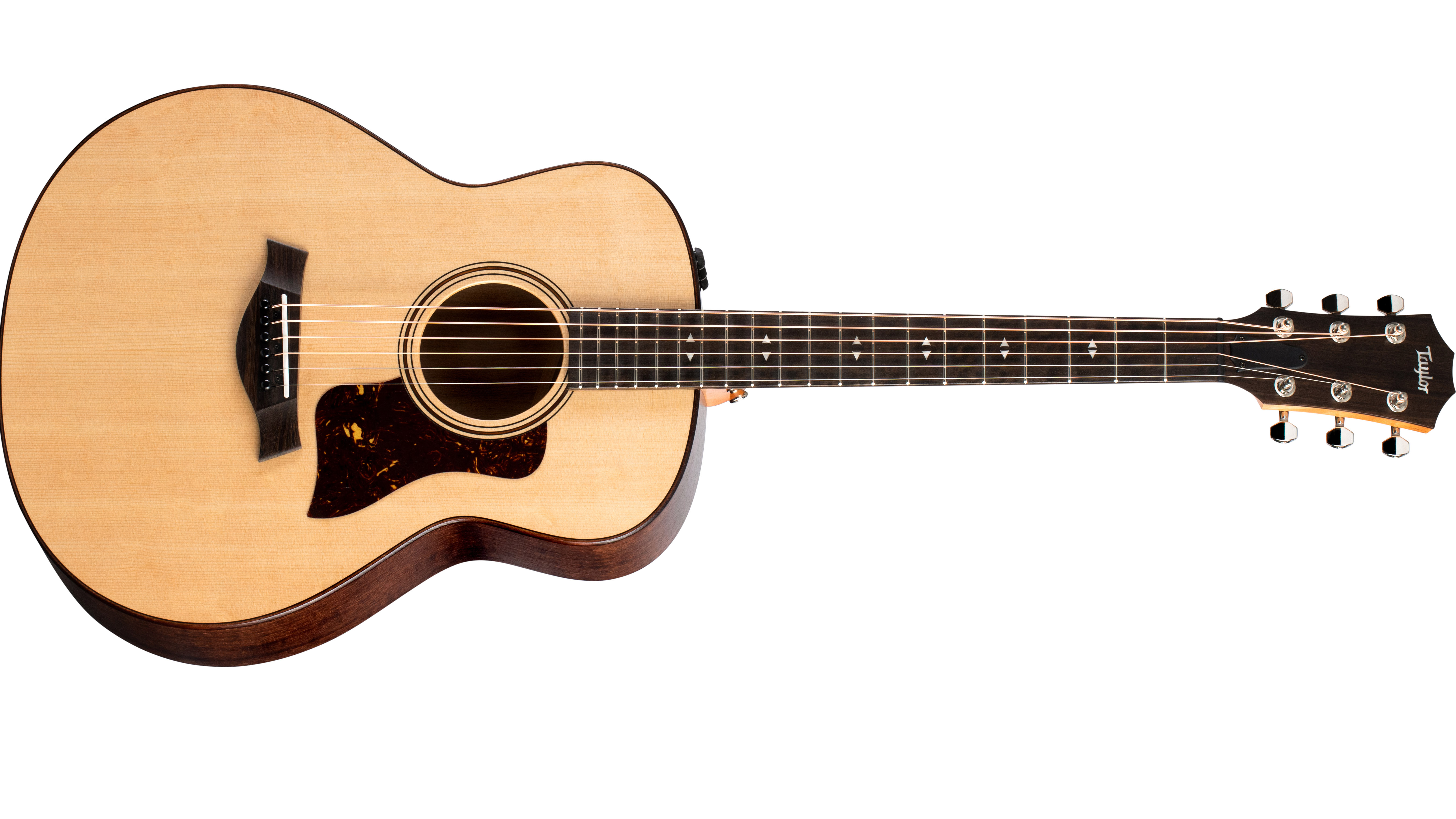
Performance and verdict
Scale length makes a huge difference to the playing experience
Opening the plush AeroCase the GT comes in (a great hybrid of softcase portability with rugged structured reinforcement) we mistake this for a GS Mini-sized guitar at first. The deluxe Mini. But closer inspection and side by side comparison with our own GS Mini Mahogany corrects us. It's not far off – but the differences soon add up.
Scale length makes a huge difference to the playing experience. While the Mini's is a 3/4-size 23 1/2 inches, the GT's is a new scale; 24/1/8". It's mid-length so something that bridges the gap if you're coming from either side; a player used to a full-size acoustic or a travel model.
Cosmetically this is a more upmarket proposition than any Mini, solid wood back and sides for starters, and it's very much a Taylor build; almost faultless in execution. And there's a fair few tone woods in the mix here, two that most players will be unfamiliar with.
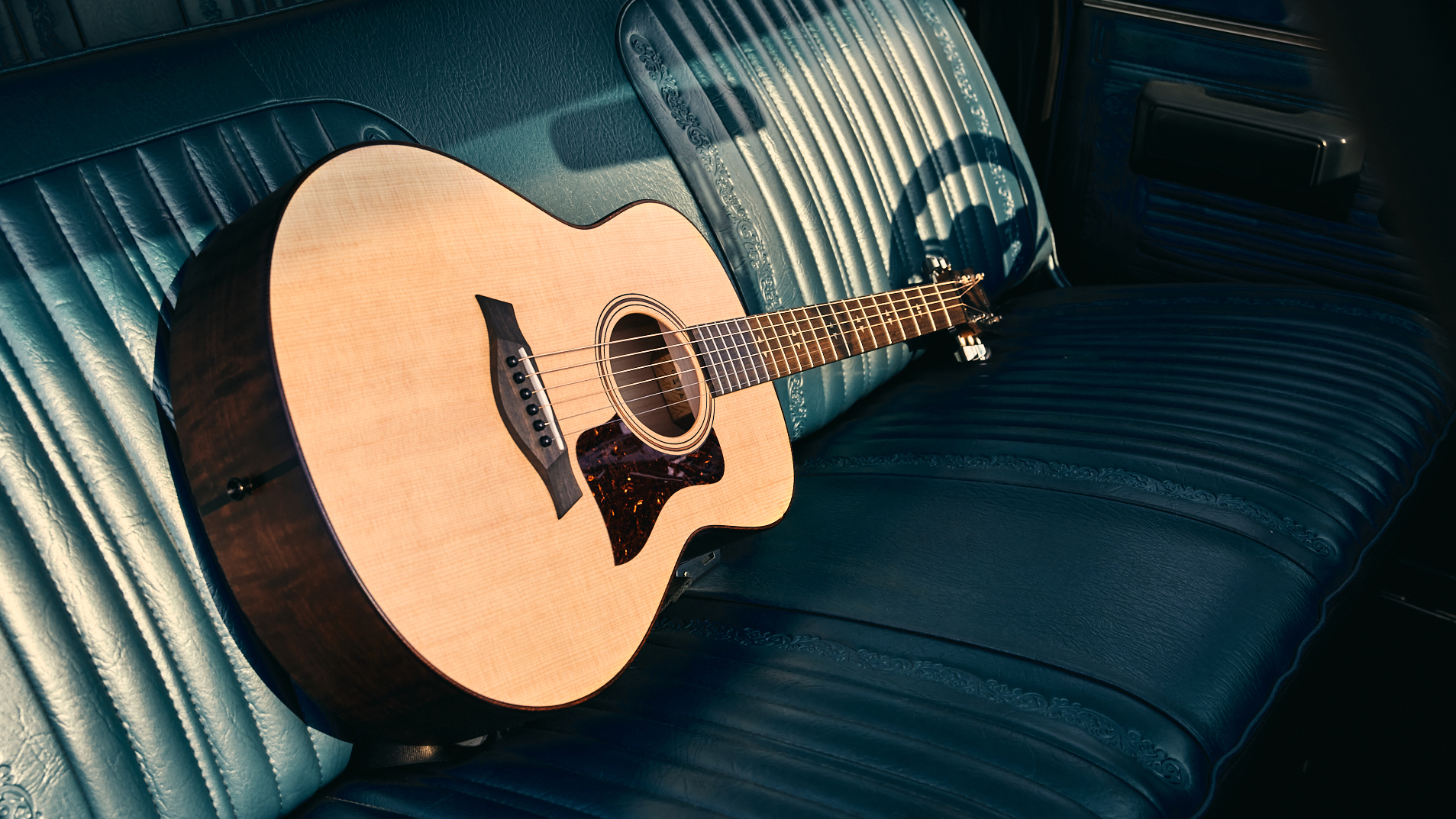
We've already reported on Taylor's move to using Urban Ash that was first seen on its Builder's Edition 324ce; a reclaimed source from felled trees in municipal areas to address the serious issues facing traditional ash harvesting in the US. This Urban, or Shamel, ash used for the back and sides here is reassuringly described by Powers as akin to a high end Honduran mahogany.
Want all the hottest music and gear news, reviews, deals, features and more, direct to your inbox? Sign up here.
It looks great here in a dark Urban Sienna hue to contrast the paler buttery shades of the satin solid spruce top. We especially like the overlap of the ash with a thin black purfling to frame the top.

Remember we said 'almost faultless'? Well it's more a taste preference but the orangey stain for the mahogany neck on the GT seems an odd aesthetic match for its body, surprisingly so from Taylor. We'd have preferred a darker stain.

An even more surprising inclusion here is eucalyptus for the fretboard, bridge and headstock overlay
An even more surprising inclusion here is eucalyptus for the fretboard, bridge and headstock overlay. The hue isn't unlike Taylor's ethically farmed ebony here with more pronounced but attractive contrasting streaks. Again, this farmed source sees Taylor diversifying and thinking ahead with sustainability. It also seems to have a positive effect on the playing experience as we'll discuss later.
Even the inlays are new ground here; an Italian acrylic 'Pinnacle' design we haven't see from Taylor before. It adds to the statement that this is something notably different from a company known for innovation. Does it add up to a winning formula in play?

The Taylor GT immediately feels like a missing link when you sit down with it; Powers alluded to the nickname 'Goldilocks' because it's just right. And it does feel strangely familiar for what is a new scale in acoustic guitar.
Taylor say the 24-1/8" scale is akin in length to playing a full-size acoustic with a capo on the first fret, with a string tension (with the fitted gauge 12 strings) like playing a half step down.
The tension doesn't feel as slack as that to us, and the action isn't as low as the American Dream model we played recently either. But it does feel just right for exploiting the GT's strengths. And they are significant.

If you've spent quality time with Taylor's GS Mini, the GT feels like its evolution in every sense
If you've spent quality time with Taylor's GS Mini (and we'd recommend it), we'd say the GT feels like its evolution in every sense. The extra length retains the crucial intimacy while making runs up the neck much more instinctive. It really makes a difference that's a bit tough to forget once you've tried it and returned the Mini's shorter scale. But there's more at play here…

The eucalyptus 'board and Taylor's consistently superb fretwork play their part in the slinky playability we experience, but the lingering sustain that rewards sensitive and dynamic playing reflect something else at work; C-Class bracing.
If you've only just got used to Andy Powers' ingenious V-Class, just think of this of the same idea but adapted for a smaller bodied model. The GS Mini used an arched back in its recipe to serve surprising projection, here C-Class bracing brings sophisticated detail that will make you want to stay in the higher reacher because of the sonic rewards. The dusty end will be a thing of the past.
But the GT doesn't sound like a smaller derivative of the V-Class models we've tried. As we noted, its closest sibling is the GS Mini - and that means strong and clear midrange, and a punchy clear tonality overall with less of the sense of EQ'd softness we've noticed in something like the Grand Pacific.

It's a guitar you will come back to because it feels like a friend, and plays like a versatile tool you can rely on for writing and recording
The GT's sound is unsurprisingly more open than its Mini sibling, but it's a power underpinned by the detail of the C-Class character; a woody voice with depth for blues and folk, and a strong mids to find place in a mix for rhythm. It's a guitar you will come back to because it feels like a friend, and plays like a versatile tool you can rely on for writing and recording.
Live, unless you swear by a third party pickup, we'd recommend you opting for this electro model over the base GT with a retrofit pickup. We'll be honest, Taylor's Expression System impresses us every time with how well it communicates its guitars' unplugged character. Three low key controls giving you enough power to shape that quality. And when we plugged into a Blackstar Sonnet 60 and added reverb the sound we wanted was just there; clear and inspiring.
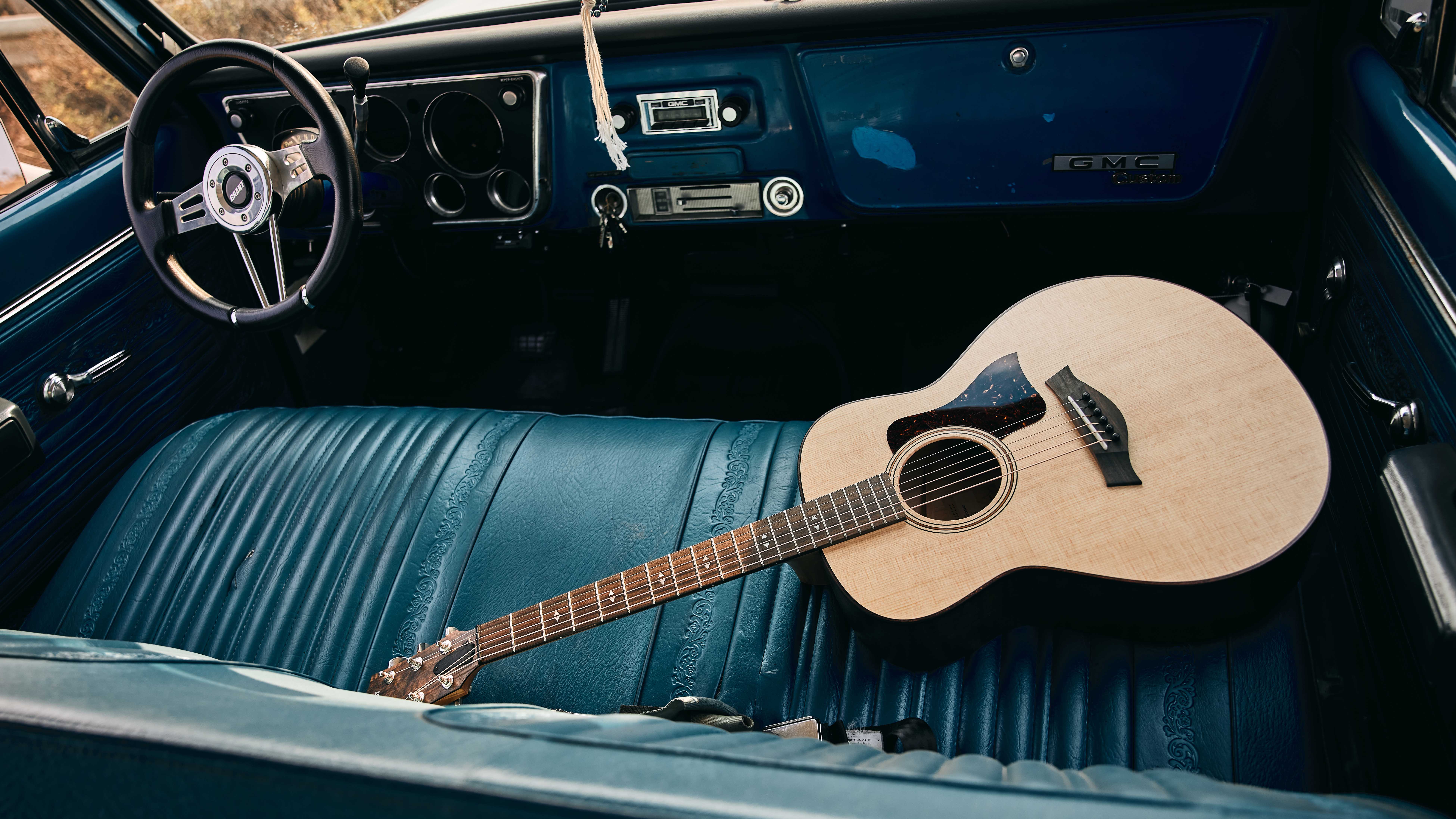
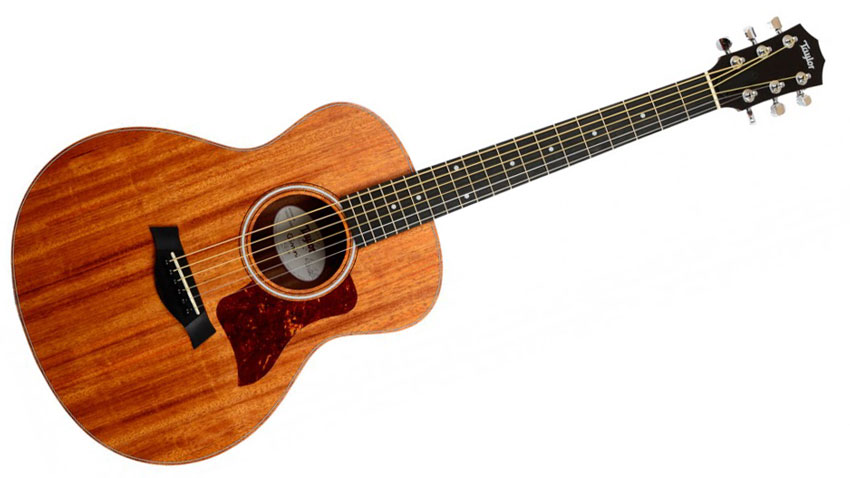
Still the best Taylor guitar for value and portability, and gig-ready with the onboard expression system; all guitar players have room for a Mini in their lives.
A UK build with a quality LR Baggs VTC preamp system, this is at the higher end of the travel guitar market.
A three-quarter-sized acoustic with great playability – even the Fishman preamp system punches above its price.
So where's the rub here? It's not the guitar but where it sits in the Taylor line, or more specifically how it's priced there. The RRP for a solid wood, American made Taylor electro with these features isn't really up for debate for us but this feels like an acoustic guitar consciously designed for the many – one Taylor is clearly pushing as a pick up and take anywhere guitar, like the GS Mini before it. The difference is… well, the difference is over £1000.
It's certainly far beyond the kind of price we'd be happy to sling around the campfire
The GS Mini-E was £645 when we reviewed it four years ago, even remarking then that it cost more than its travel guitar competition. Like all Taylor GS-Mini models it features a laminate back and sides and none of the C-Class development found here. But the ethos was an accessible instrument with an accessible price. It's a shame that only the first part can be applied to the GT.
Even though we can accept the reasoning why in the final build, and its still not near mid-table of the Taylor price scale, it's certainly far beyond the kind of priced guitar we'd be happy to sling around the campfire.
It'll be interesting to see what the future holds for the GT; the GS diversified with mahogany, koa and blackwood after its launch as a rosewood guitar. Could the GT series ever be offered in a cutaway model to further exploit its C-Class strengths? It's a tantalising prospect.
Based on what we have in the here and now, the Grand Theater is a distinct and impressive addition to Taylor's ever-expanding catalogue if you're prepared to invest after trying it out. A mid-length guitar we wish we'd had years ago, one that you'll want to keep close and keep returning to; what more can we ask of an acoustic guitar?
MusicRadar verdict: Another successful chapter in Taylor's story of innovation, the GT's mid-length scale makes perfect sense in practice. But unlike the smaller GS Mini before it, the solid wood American build means a higher entry price for players.
Hands-on demos
MusicRadar
Taylor
Specifications
- ORIGIN: USA
- TYPE: Mid-scale electro acoustic
- TOP: Solid spruce
- BACK/SIDES: Solid Urban Ash
- MAX RIM DEPTH: 115mm (4.5”)
- MAX BODY WIDTH: 380mm (15”)
- NECK: Mahogany
- SCALE LENGTH: 645mm (25.4”)
- TUNERS: Taylor nickel mini
- NUT/WIDTH 44mm
- FINGERBOARD: Eucalyptus, Italian acrylic 'Pinnacle inlays, 406mm (16”) radius
- FRETS: 20, medium
- BRIDGE/SPACING: Eucalyptus, 55mm
- ELECTRICS: Taylor Expression System ES-2 with treble, bass and volume controls
- WEIGHT (kg/lb): 1.72 / 3.8
- OPTIONS: None
- RANGE OPTIONS: The non-electro GT Urban Ash is £1619
- LEFT-HANDERS: No
- Case: Brown AeroCase
- FINISH: Matte 2.0 mil
- CONTACT: Taylor Guitars
MusicRadar is the number one website for music-makers of all kinds, be they guitarists, drummers, keyboard players, DJs or producers...
- GEAR: We help musicians find the best gear with top-ranking gear round-ups and high-quality, authoritative reviews by a wide team of highly experienced experts.
- TIPS: We also provide tuition, from bite-sized tips to advanced work-outs and guidance from recognised musicians and stars.
- STARS: We talk to musicians and stars about their creative processes, and the nuts and bolts of their gear and technique. We give fans an insight into the craft of music-making that no other music website can.
